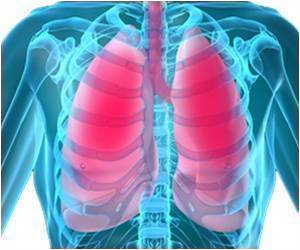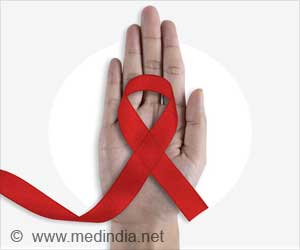Researchers at Brigham Young University and Johns Hopkins School of Medicine have found that at the time of drug treatments, the infectious HIV hides out inside a third type of reservoir
HIV hides in a type of reservoir cells, called follicular dendritic cells (FDCs) when drug treatment is initiated, researchers at Brigham Young University and Johns Hopkins School of Medicine have found.
The researchers found that FDCs, which are located throughout the body in specialized sites known as lymphoid tissue, act as bank vaults storing material necessary to maintain the immune system's armies of antibodies.If the ranks of a particular antibody dwindle, FDCs release proteins that trigger an immune response boosting levels of specific antibodies. HIV trapped on the surface of FDCs remains highly infectious and genetically diverse even during drug treatment.
This major breakthrough may aid the researchers in finding out how to attack virus hidden by the reservoir cells.
"One of the biggest obstacles in treating patients with HIV is the establishment of these reservoirs that resist treatment. The ability to understand the virus in these reservoirs, and to characterize the reservoir itself, provides information with which we can begin to try to devise strategies that target the virus in these reservoirs," said Greg Burton, a BYU biochemistry professor and principal investigator on the study.
FDC will now join two other types of cells, macrophages and the latently infected CD4+ T cell, which have previously been shown to be reservoirs of HIV.
The FDCs' vault mechanism is so efficient that trapped HIV particles stay out of reach of drugs flowing through the blood stream, leading to persistent infection. It was challenging for researchers to break inside to investigate whether FDCs harbour infectious forms of the virus.
Advertisement
Suzanne Gartner, an HIV virologist at Hopkins, and Burton devised a method of getting into the FDCs, which involves gently digesting tissue with enzymes, then separating FDCs with a cell sorter and specific antibodies that react with FDCs. As expected, they found infectious HIV trapped on the surface of FDCs.
Advertisement
The genetic makeup of HIV changes as it multiplies inside the body. If untreated, the virus is free to roam and sees more genetic variations and when treated, the virus does not replicate as often and fewer mutations occur.
Biologist Keith Crandall used a pair of supercomputer clusters at BYU, for constructing the viruses' family tree for three patients from Johns Hopkins. Blood samples taken at different points in time gave reference points to establish a time frame for different versions of the virus recovered from FDCs.
"It turned out the data matched the hypothesis that one, the FDC is a reservoir, and two, it's actually acquiring genetic variance throughout the course of mutation. We saw the accumulation of drug-resistant mutation, and saw exceptionally high genetic variation. This makes treatment extremely difficult," said Crandall.
The study will appear in the June issue of the Journal of Virology.
Source-ANI
RAS/L











